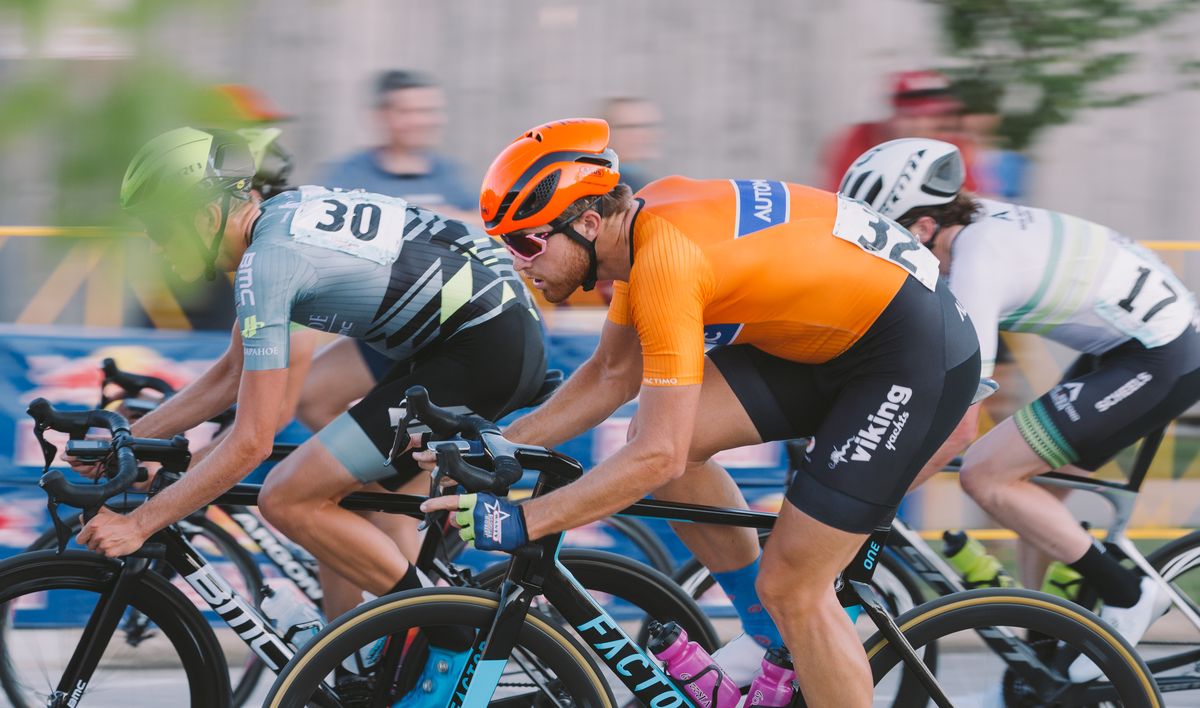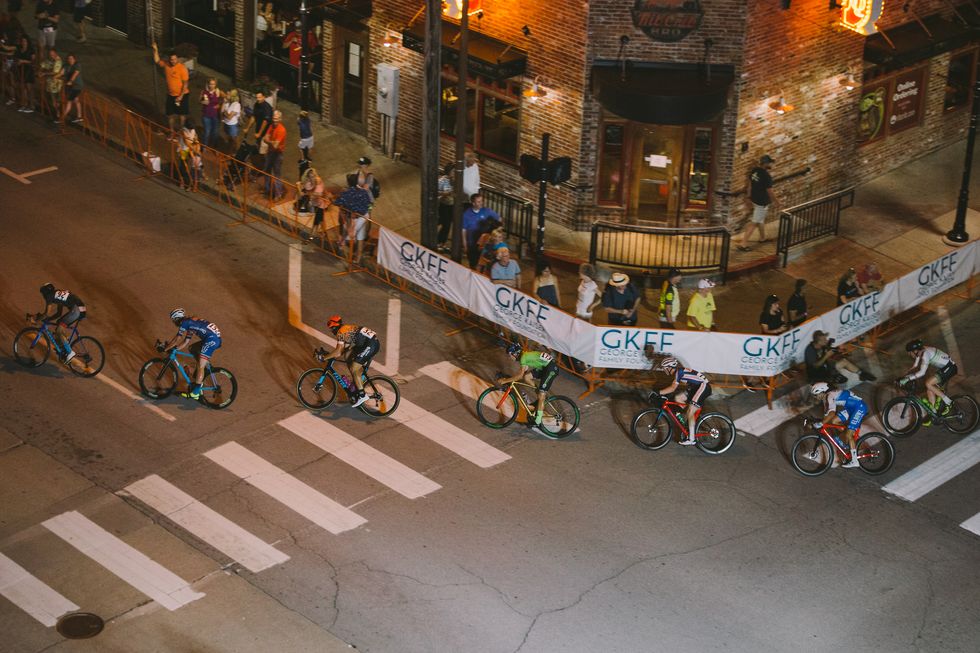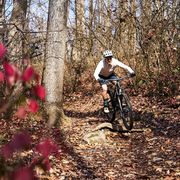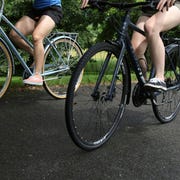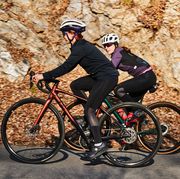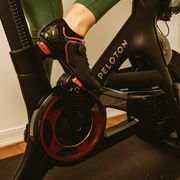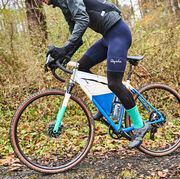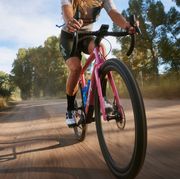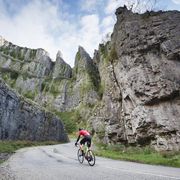Tom Gibbons is the two-time overall champion of the USA CRITS series (2019 and 2021), a cycling coach, and the team captain of Automatic Racing. Tom lives in Boulder, Colorado, with his Norwegian Elkhound Hilda.
I’m a big guy. Not NFL-big, but 195 pounds is a lot of mass to accelerate 200 times in the period of an hour. The very nature of crits is that there’s not much space to actually go fast, and so for big riders with big engines, it sometimes feels like driving a Mack Truck around a parking lot. By the time I’m on top of the gear, I’m already back off the gas and setting up for the next turn. And as someone who’s got quite a bit of gas to give, that can be maddening.
The short, choppy course design in criterium racing is physiologically limiting. While it drives me nuts, it actually opens up the potential to be competitive to a much wider range of riders. What this format does is shift focus from physiological skills to technical skills.
- Related Story: What I Learned Racing My First National Crit
I just heard a collective groan from every mountain biker in the country: “Technical?” I get it. The initial impulse may be to laugh. There are no rock gardens on a crit course. No mud, trees, or mandatory drops. It is a flat, four-corner city circuit, and it couldn’t be more straightforward, right?
Well, yes and no. We tend to think of technical in the sense of “If I biff this, I’m falling off a cliff.” But when the consequence of a mistake is small, we often don’t realize we’ve made a mistake at all until it’s too late. So many riders who are less skilled technically in a crit ride around all day, unaware they’re even making mistakes until it comes time to press on the gas only to find the tank is already empty. The lack of traditionally technical features in crit racing means the speeds are higher, the windows of opportunity fewer, and small errors add up without the rider realizing. The “easier” a course is (wide roads, few and open corners), the more riders there are physically able to fight for space at the front, making every minute battle critical. Instead of putting out fires from ten different riders, suddenly you’re putting out fires started by fifty. Small mistakes can cost you position, and when you’re averaging over 50kph and setting up the next turn every 13 seconds on average, those places can become difficult to make back up.
So, this all begs the question, how do I race a crit?
I reached out to Ed Clancy, a three-time Olympic gold medalist who now races criteriums in England. His suggestion is to “make your minimum corner speed as high as possible. So, late braking and pedaling out the corners early can be useful.”
Here are a few other tips, some from Clancy, some my own, on how to be competitive in crit racing:
- Have good technique in the corners, and choose fast lines over short lines to minimize speed loss and therefore decrease how much you have to accelerate on the other side. Again, tiny differences like a slightly wider line choice can add up big over the course of a 70km crit.
- The fight for position in crit racing is never-ending, and there isn’t much room to be polite. “If your bars are in front of the person alongside you, you’re in control… and vice versa,” says Clancy. This is a good rule of thumb.
- Pick and choose which battles to fight. “If it’s more flowing, you can sit back and take more of a gamble to move up later on. [But] if it’s twisty, prioritize getting near the front early,” he says. This is true for line selection as well.
- The wider the line, the less you have actually to turn, and the more speed you’re able to maintain. Through most of the race, if you’re trying to conserve energy, it’s usually best to take outside lines through the turns. With this higher speed, you have less need to make a significant acceleration on the exit, and you will conserve energy. With that said, when it’s crunch time, you need to start protecting the inside so another rider doesn’t come waltzing through the door 150m from the line to blow you away.
- The closer you get to the finish, the more critical every little battle becomes. You have to stop conserving energy and start making an effort to defend (or improve) your place in the bunch. As the timeless Belgian adage goes: “You must push the pedals, eh?” It really is as simple as that.
- Related Story: The Right Way to Treat Road Rash
Now, here’s some insider information for you: Even if you are a terrible sprinter, if you are the second wheel through the final turn, there’s a decent chance you will win, and it is very unlikely you will be outside the top five. The problem is, anyone worth their salt knows this, and so getting to that place can be tricky. This is where all of that energy conservation throughout the race, grittiness in the bar-to-bar battles, and a little bit of timing come into play. As Ben Wolfe, Best Buddies racer and coach for CCNS, puts it, “experience wins races, and the more you gather, the better you will get.”
Racing is a game. If you learn to play the technical side well, you can get by with very little power. On the flip side: If you have the engine of a locomotive, but all the finesse of a sledgehammer, you may just find yourself out the back.
And that’s the best-worst thing about crits: If you learn to play the game, anybody can succeed at a high level. You don’t need Pogačar physiology. You don’t need Cipollini explosiveness. You just need to get good at the tedious, repetitive, ticky-tack, imperceptible battles that come at you six times per minute. It’s like knitting or basket weaving, just with more swearing (I assume).
For an insider’s view, come on board with Thomas Gibbons at the Blue Dome course of Tulsa Tough, the first stop of the 2021 USA Crits calendar. Watch the video.
Tom Gibbons is the two-time overall champion of the USA CRITS series (2019 and 2021), a cycling coach, and the team captain of Automatic Racing. Tom lives in Boulder, Colorado, with his Norwegian Elkhound Hilda.
